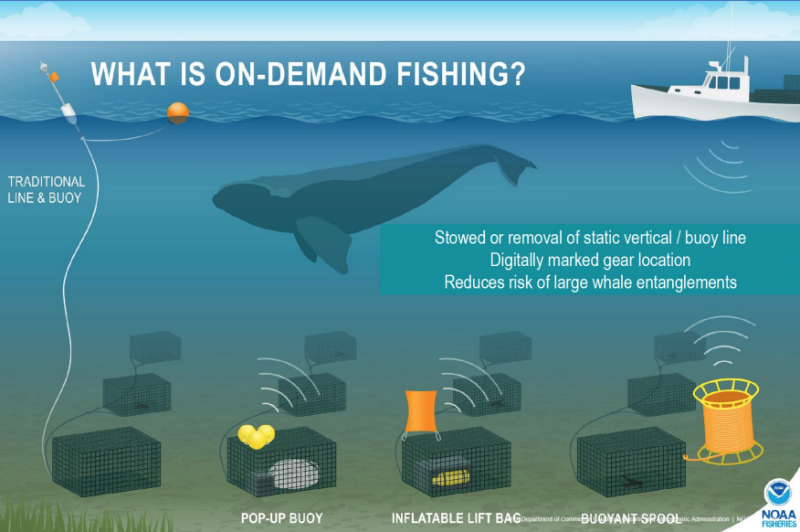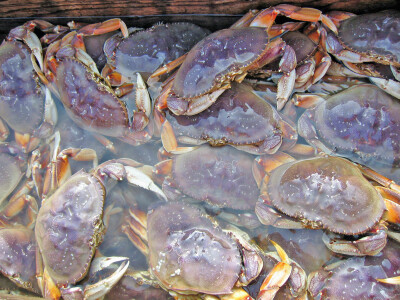With experiments now underway with ropeless trap gear in the Northeast, the New England Fishery Management Council is recruiting fishermen for a new group for ideas on reducing potential conflicts between mobile gears and trap lines not marked by surface buoys.
There is intense pressure on the Northeast lobster and offshore fisheries to reduce use of vertical lines, and their possibilities for entangling endangered North Atlantic right whales. The National Marine Fisheries Service sees new technology for setting trap lines with buoys that stay on the sea floor until recalled by an acoustic signal from fishermen as a promising long-term solution.
The “on-demand fishing gear conflict working group” would help the council deal with how to head off conflicts between the new gear and other fisheries like groundfish, monkfish, scallop and the recreational party and charter boat fleet.
Variously called on-demand or pop-up gear, the new systems use acoustic or timed-release technologies such as pop-up buoys, float bags, and buoyant rope spools to retrieve gear set on the seafloor. Fishermen using the systems have geolocation apps to locate and recall their gear for retrieval.
Other user groups can access gear locations using those apps to avoid gear conflicts.
Council officials were careful to say the group must be focused on “interactions between on-demand and other types of fishing gear. The working group will not comment on the suitability of on-demand gear for fixed gear fisheries.”
The council is asking for volunteers to apply online, with a deadline of April 24. The council will choose representatives from the mobile gear, gillnet, trap/pot, and recreational fisheries. Other members will be appointed from the New England and Mid-Atlantic fishery management councils; the Atlantic States Marine Fisheries Commission; the National Marine Fisheries Service Greater Atlantic Northeast regional office and Northeast Fisheries Science Center; and New England council staff.
The council wants the new working group to:
• Engage with fishermen, industry members, members of the public, and other relevant stakeholders to identify potential interactions between on-demand and mobile, fixed, and recreational fishing gear use;
• Develop strategies to reduce gear interactions between on-demand and other types of fishing gear;
• Identify and develop strategies to reduce gear interactions that may result from risk reduction measures under consideration for gillnets and other trap/pot fisheries;
• Explore liability issues related to gear interactions;
• Identify the implications of on-demand fishing gear use for New England council-managed fisheries.







